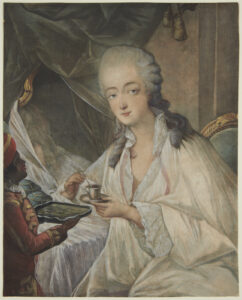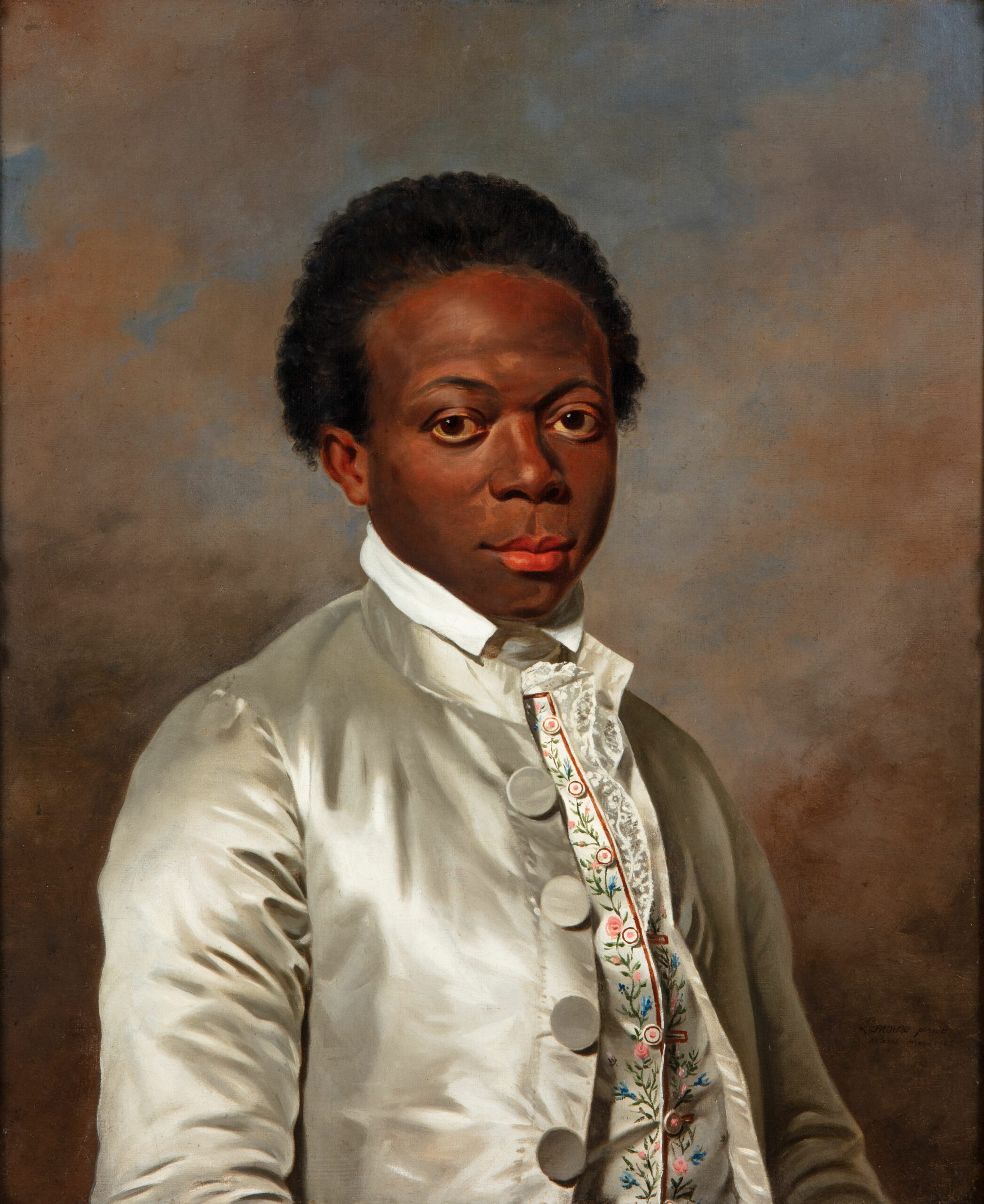Louis-Benoit Zamor is best known for helping to send French Aristocrat Madame Jeanne du Barry to the guillotine during the French Revolution (1789-1794). Born in Chittagong, India (present-day Bengal), probably of Siddi ancestry (the Siddi were Indians of African descent), Zamor’s birth year is generally accepted as 1762. Some accounts report he was purchased by the Prince de Conti; others cite the Duke of Richelieu. No one knows if he was an unsolicited gift to King Louis XV of France or purchased on behalf of the king. Louis XV gifted the child to his mistress, Madame Jeanne du Barry, as her personal servant (page). The exact date of his arrival at the Royal Palace is unknown, but his likeness appears in a painting commemorating the inauguration of the Pavilion at the Chateau of Louveciennes in 1771.
Zamor lived at the Palace of Versailles even after the death of Louis XV (1774) and the exile of Du Barry. Upon her freedom in 1776, Zamor was reunited with Du Barry, and they moved into the Chateau de Louveciennes. Years later, Zamor began visiting Paris and became a fervent supporter of the new republic, befriending revolutionaries such as Georges Grieve. Unknown to Du Barry, he had also become a Jacobin and an officer with the Committee for Public Safety established by Georges Danton. After her first arrest, Du Barry realized Zamor had turned on her. In December 1793, Du Barry was found guilty at trial and put to death. That same month, Zamor was arrested and jailed as her accomplice but released six weeks later due to lack of evidence.

In 1794, Zamor disappeared from public view and, by most accounts, didn’t appear again until 1815 when he was discovered living in a small Paris apartment where he tutored children. Eventually, his money and health declined, and he died in his apartment on February 7, 1820. He is thought to have been 58 at the time of his death.
Details on Zamor, including his race, ethnicity, and appearance, since several portraits previously thought to be him are now in question, are now debated. Also, the reason he turned against Du Barry is still disputed by historians today. One biographer of Zamor, Cecile Bishop, states, “…He appears in a wide range of written and visual sources, from the eighteenth century to the present, including pamphlets, novels, paintings, and even films such as Ernst Lubitsch’s 1919 silent feature Madame du Barry and Sofia Coppola’s 2006 Marie Antionette. Yet his character remains unsubstantial and elusive…”
Though the actual Zamor isn’t widely known, negative representations are readily available. For example, in the years following the death of Du Barry, Black servants perceived to be deceitful or lascivious were often labeled a “Zamor.” Lise Schreier, a historian of this period, describes how the pervasive reaction towards him has been cemented in history. “Between 1815 and 1914 … Zamore was consistently presented as a repugnant, treacherous character… Even more perplexing, given his status as a dark-skinned commodified child, his ubiquitous shadow neither generated nor organized any type of discourse on slavery, childhood, or abuse. Zamore, who had hardly ever been considered fully human while he was alive, did not become a fully formulated thought after his death, either.”

